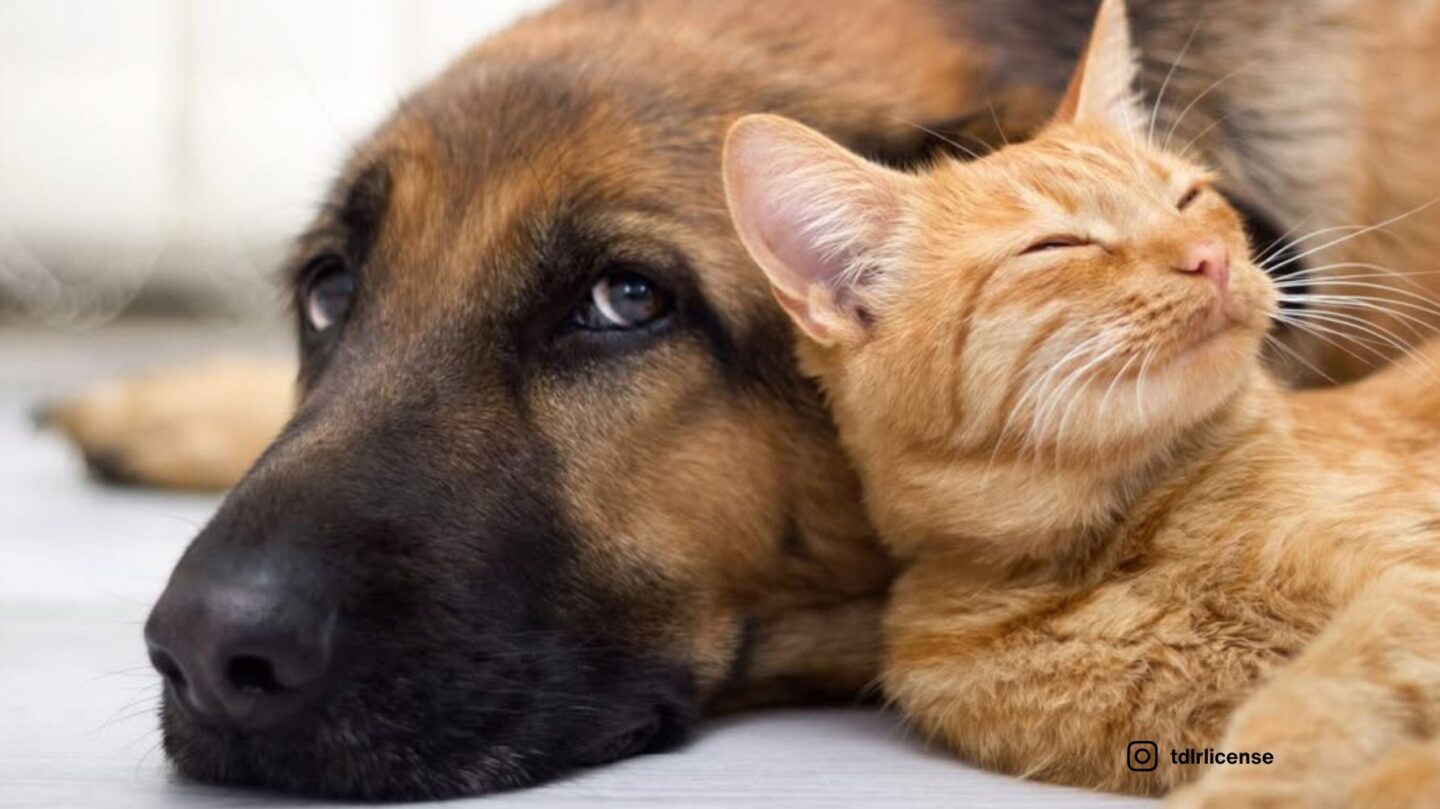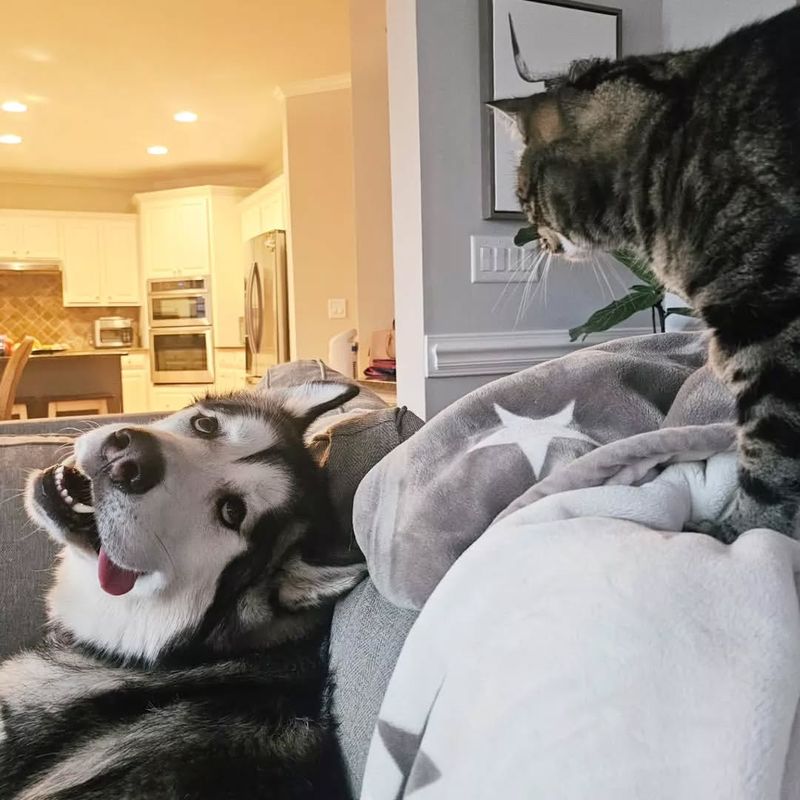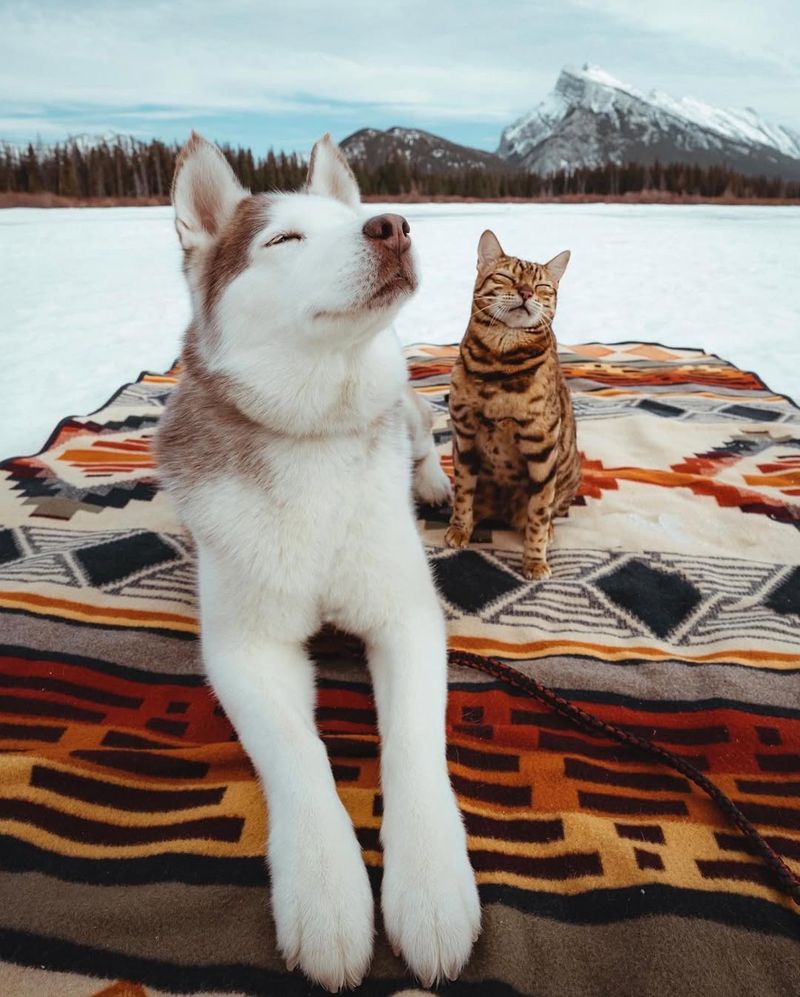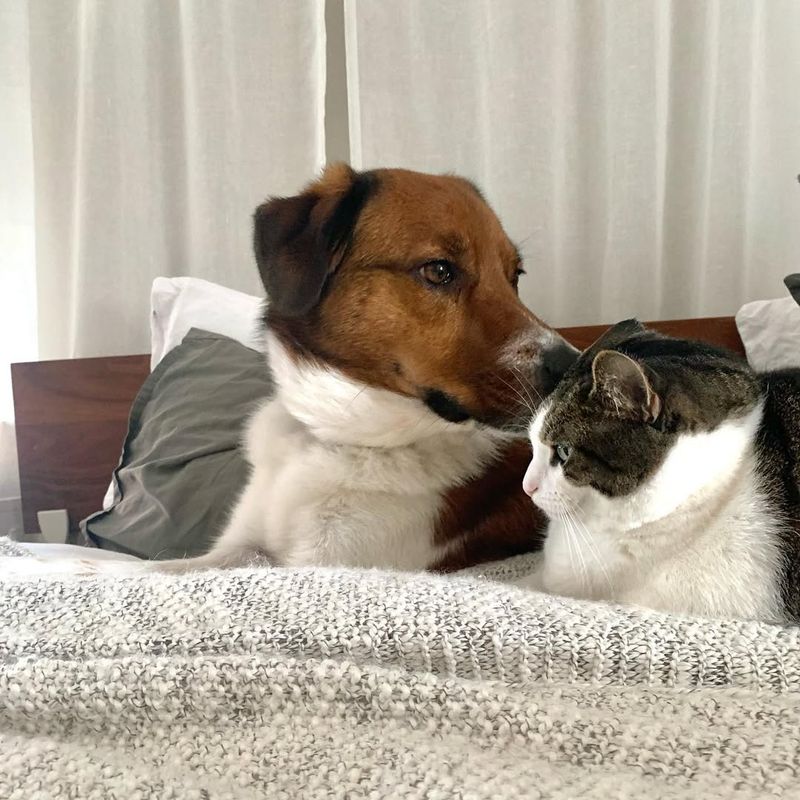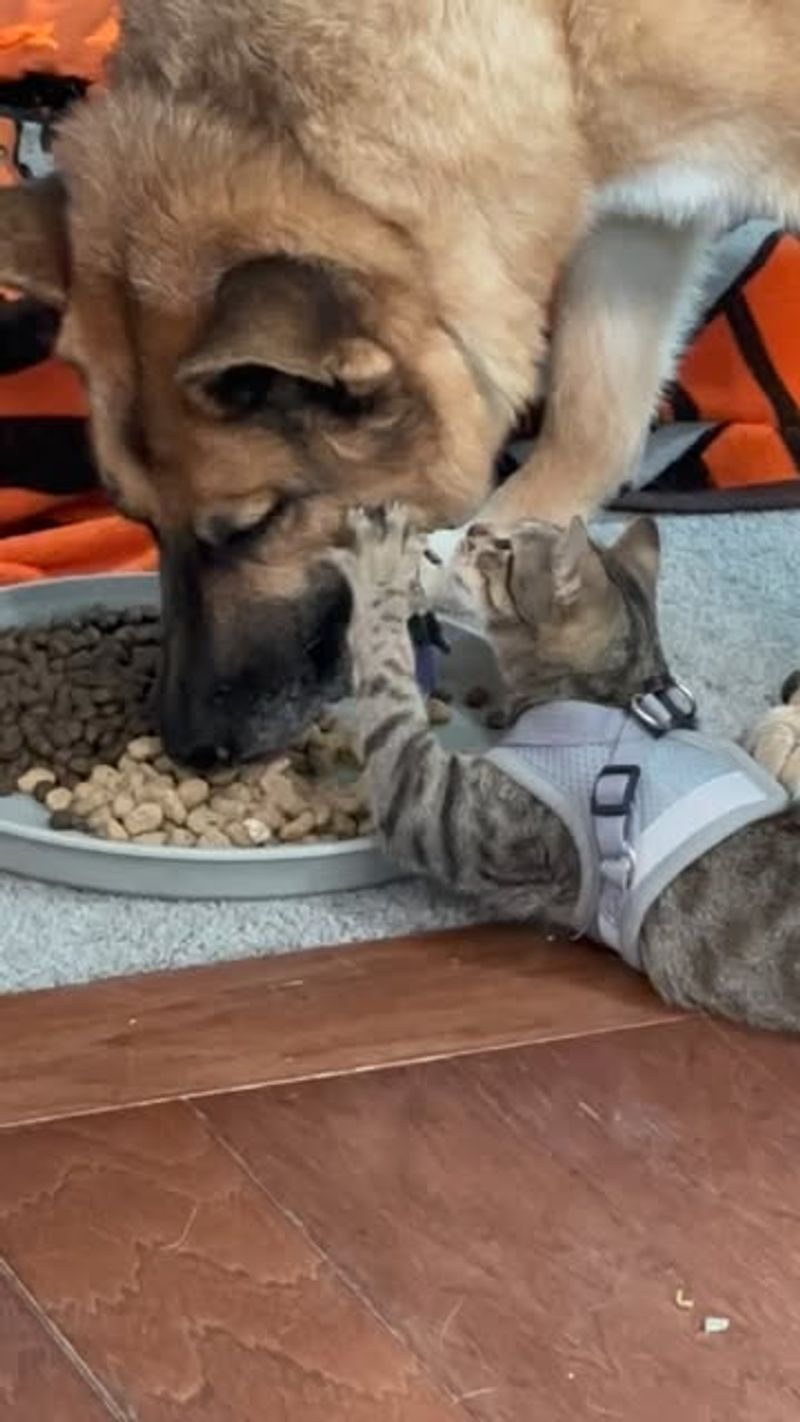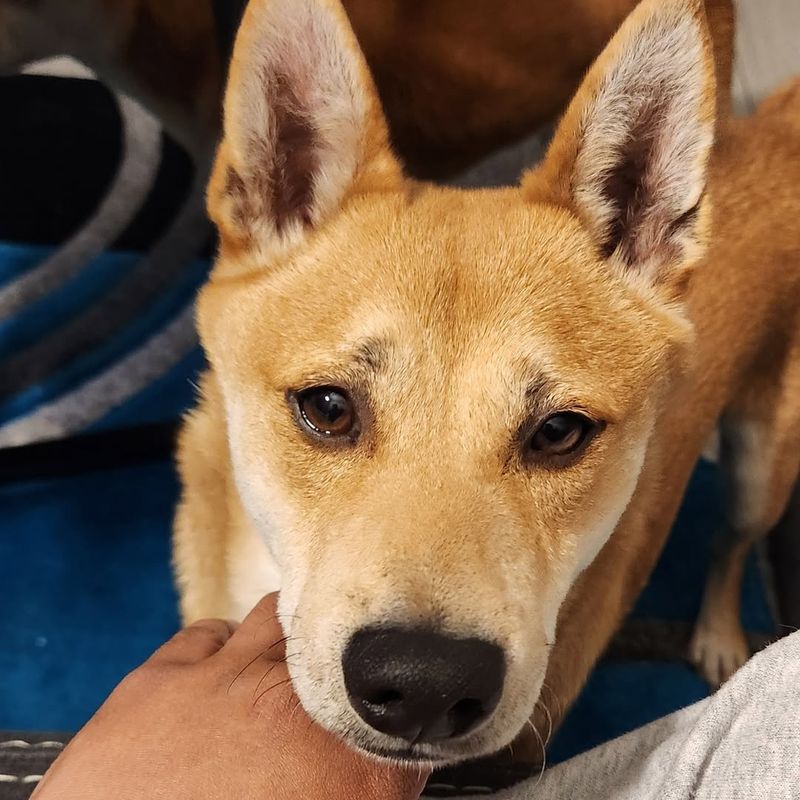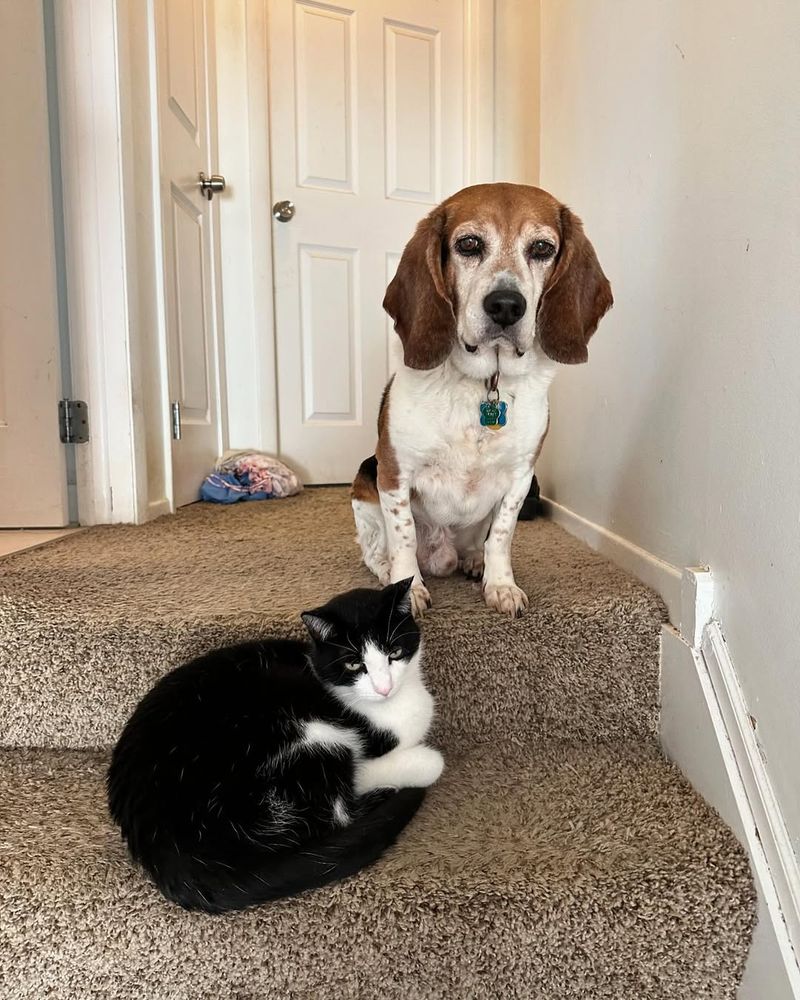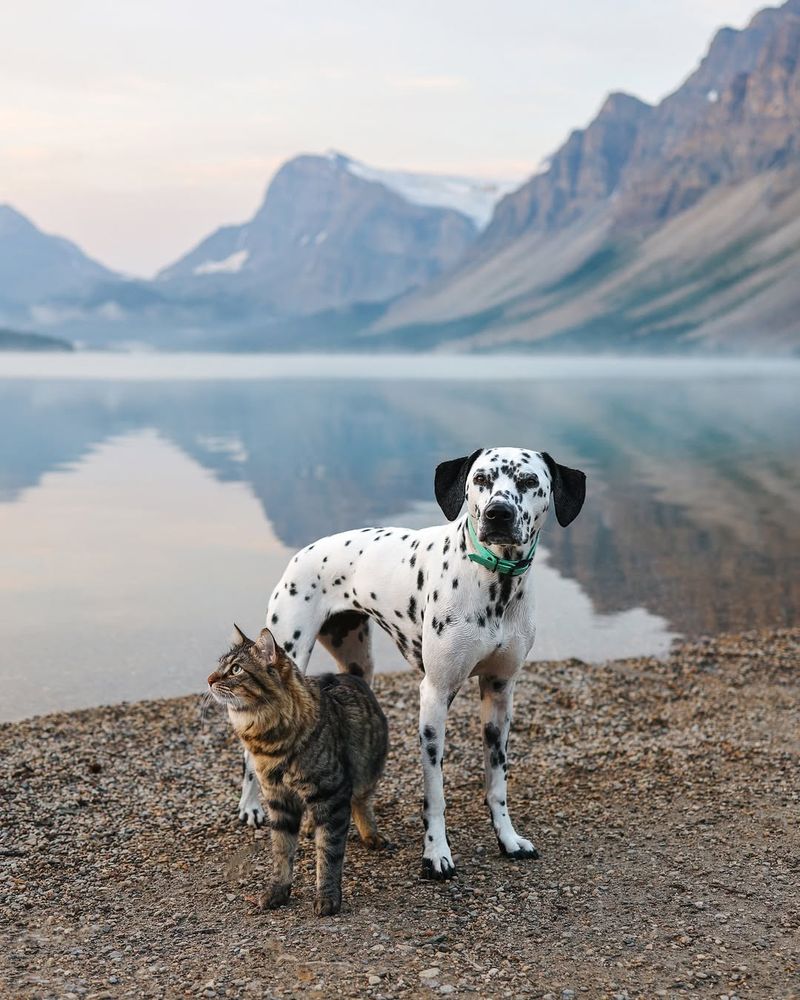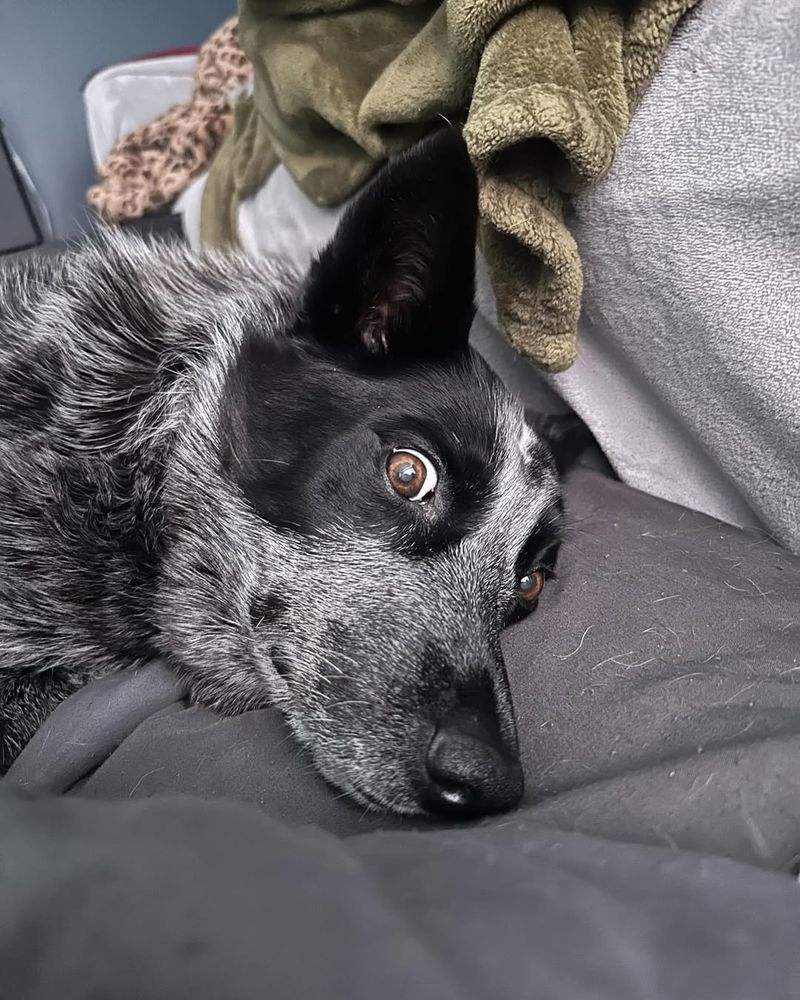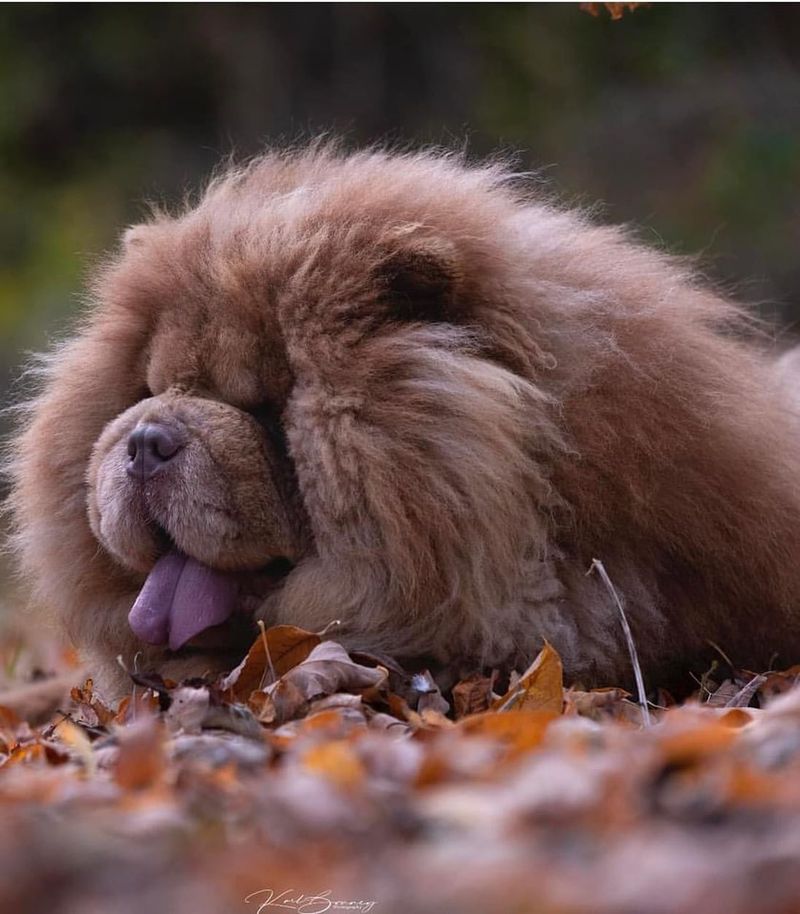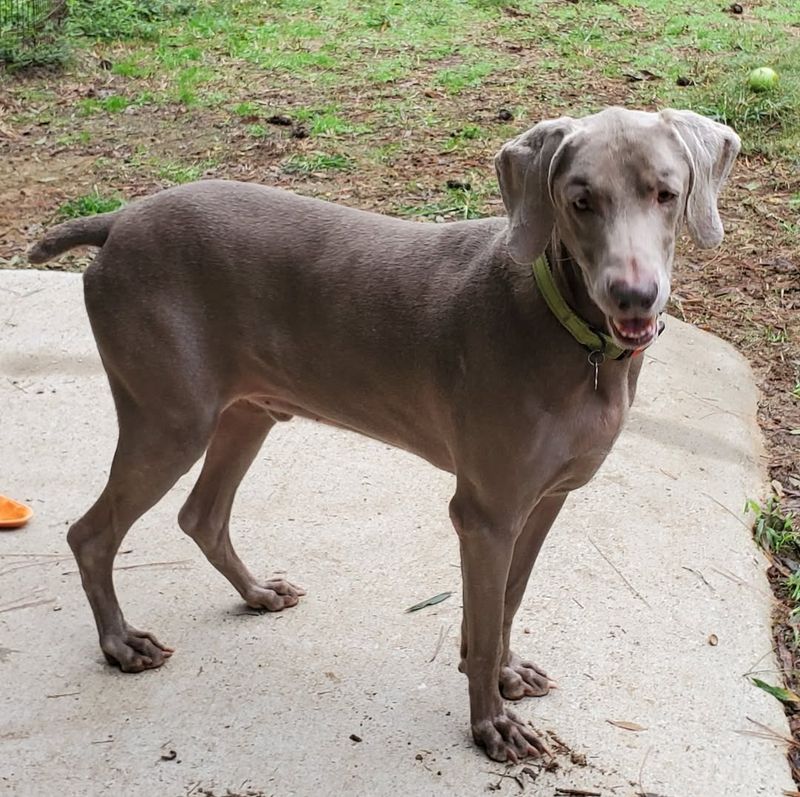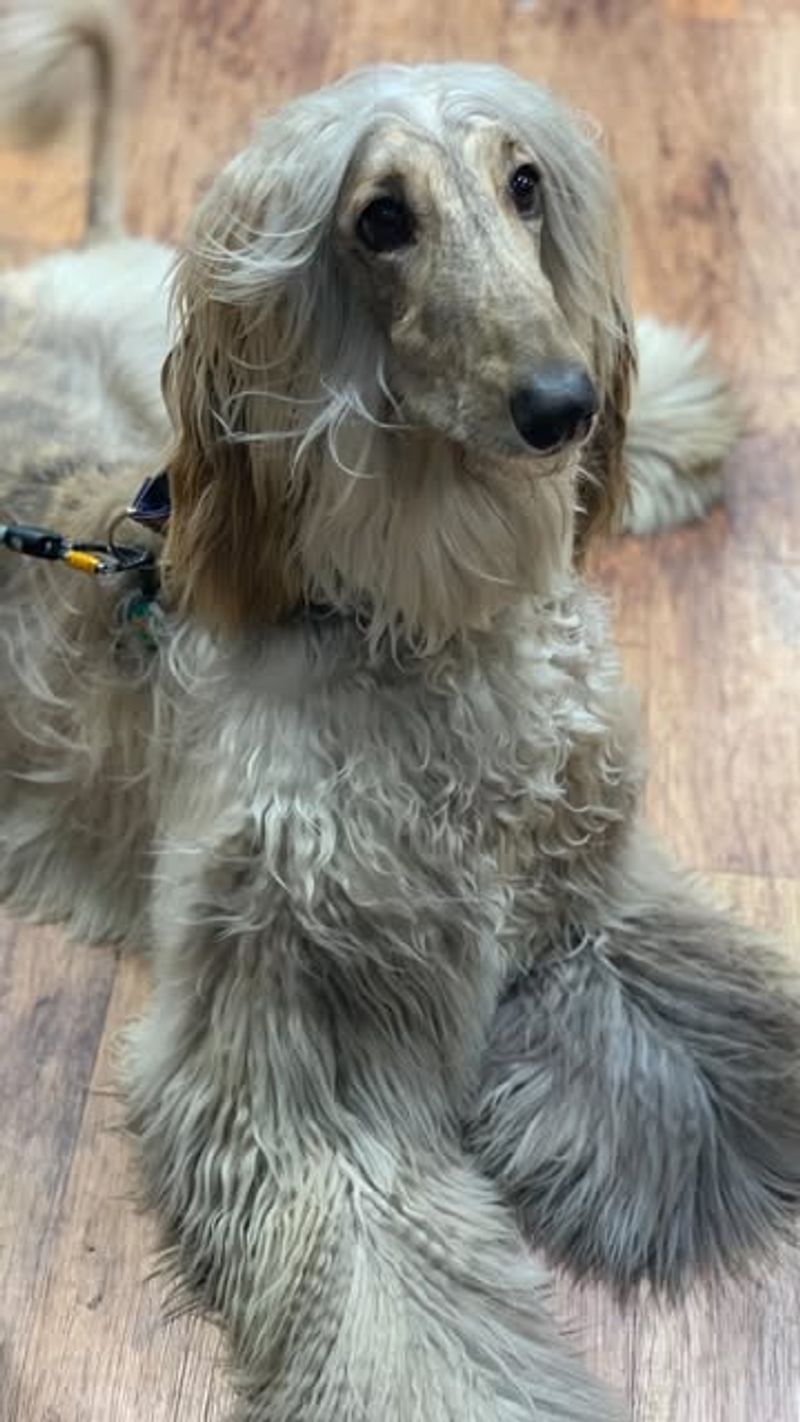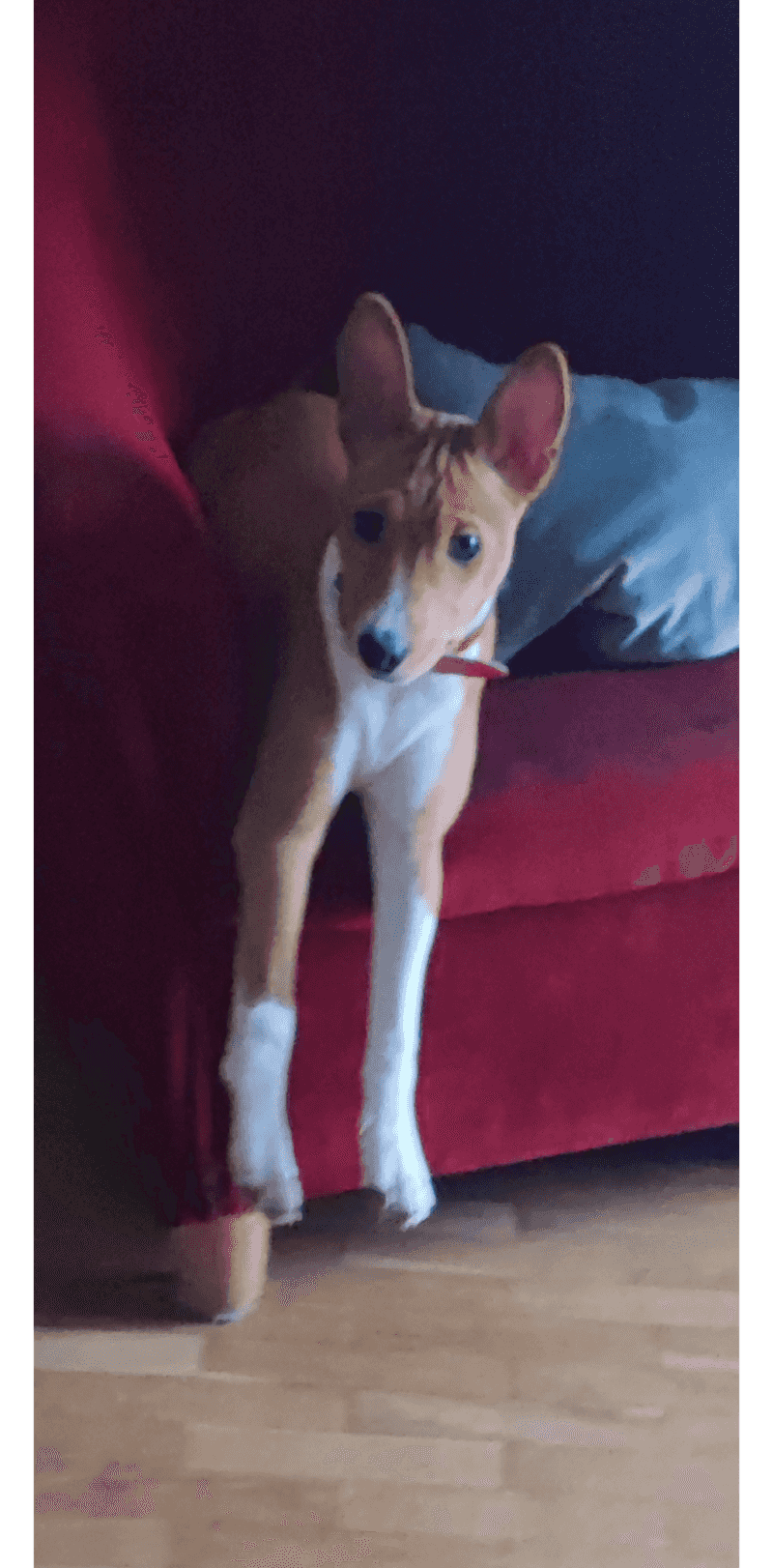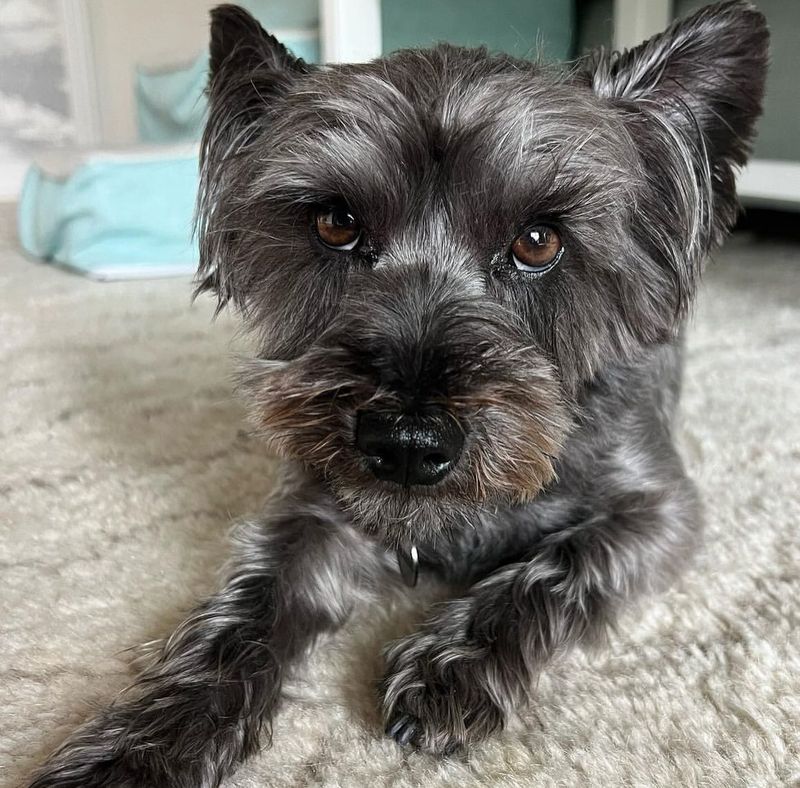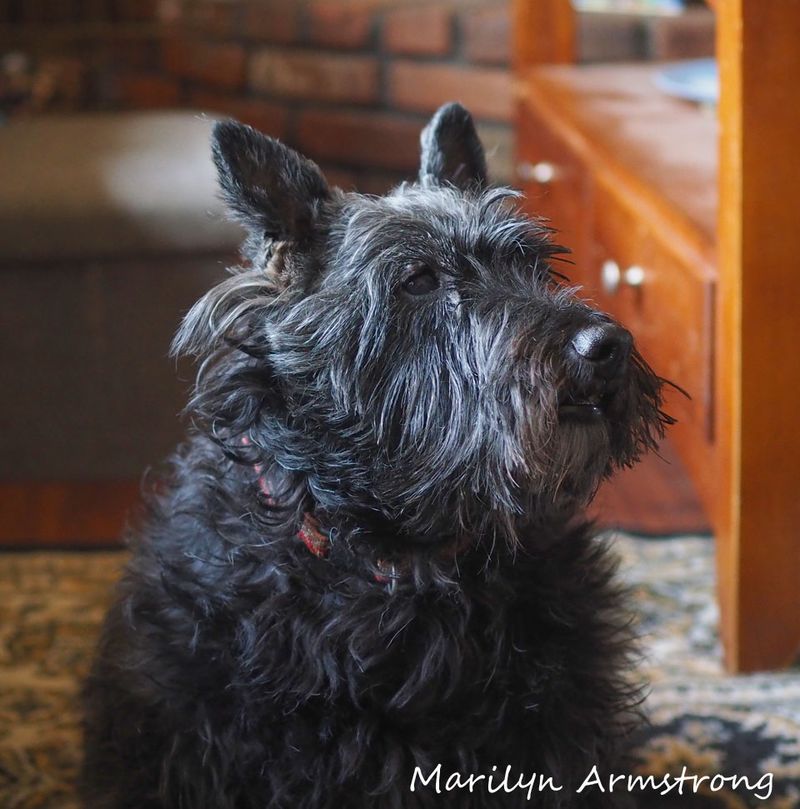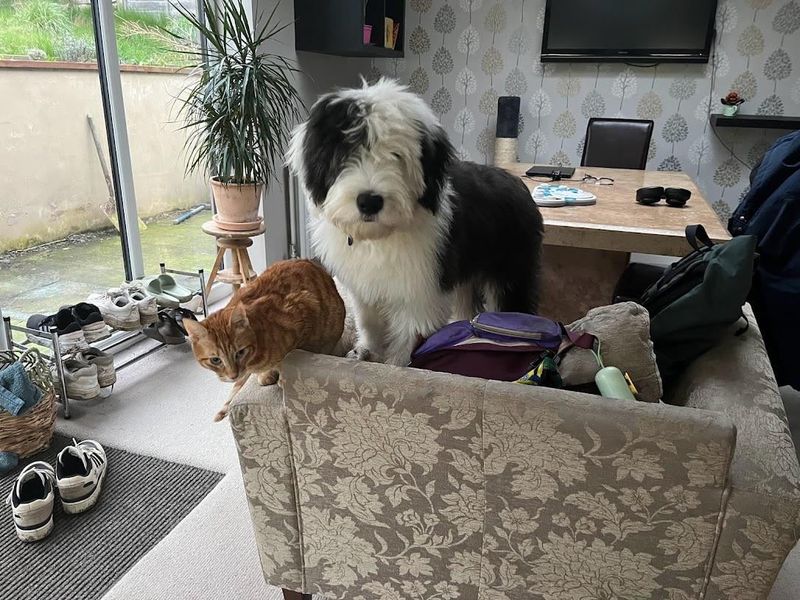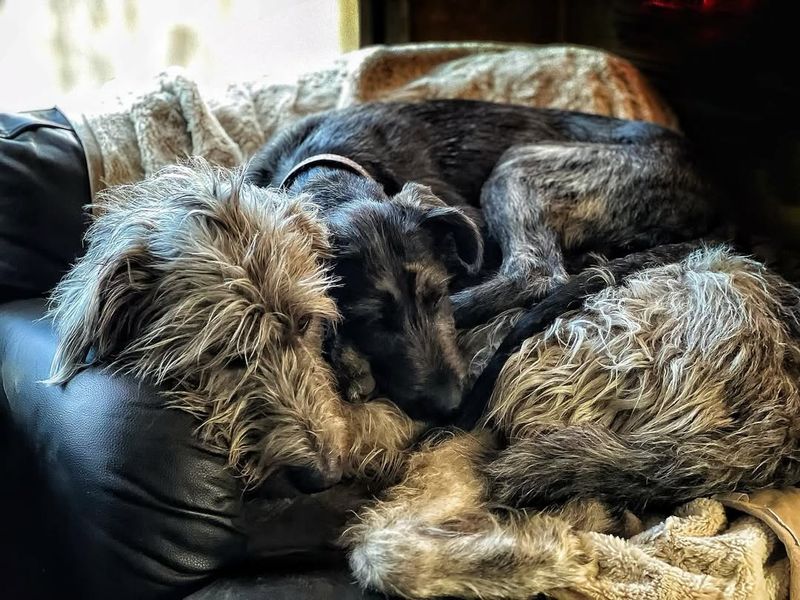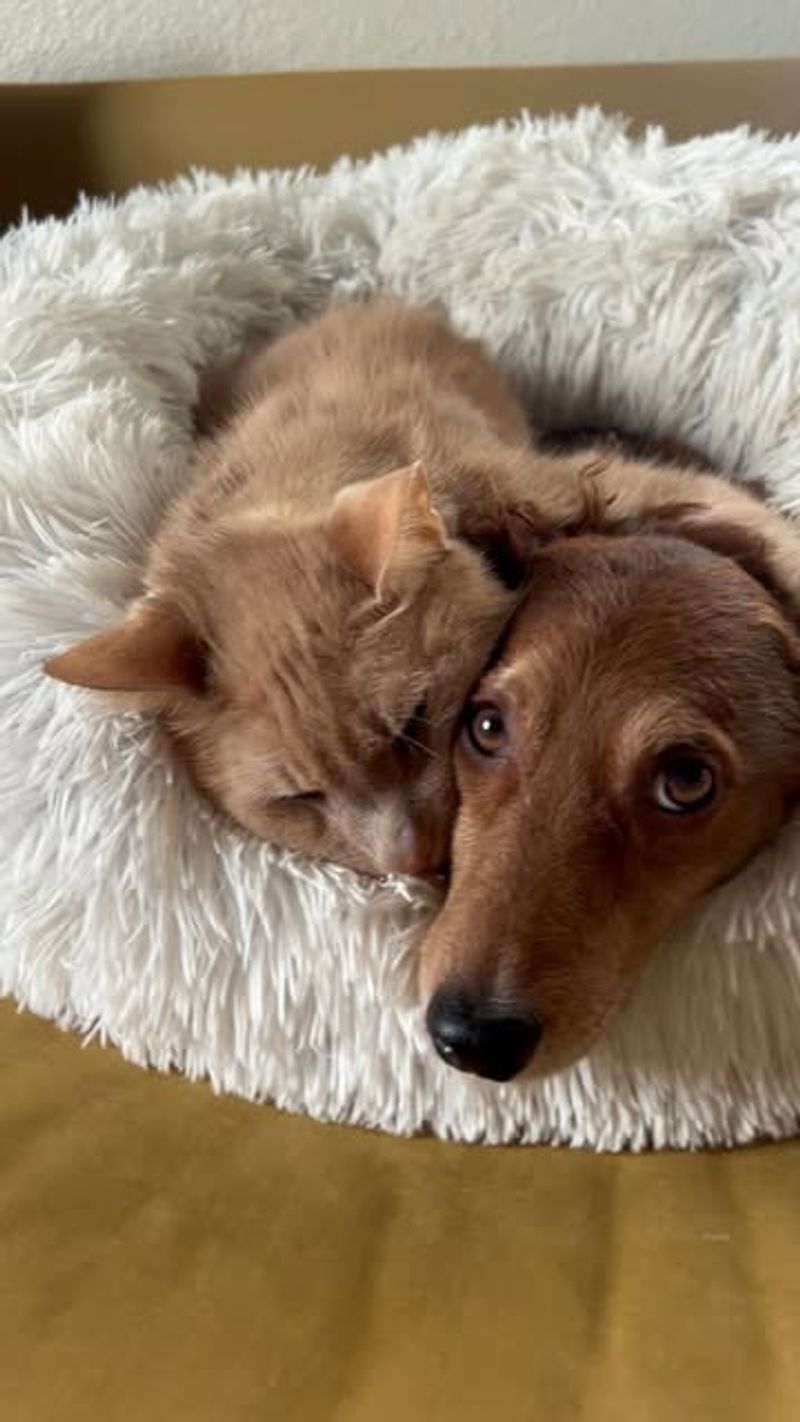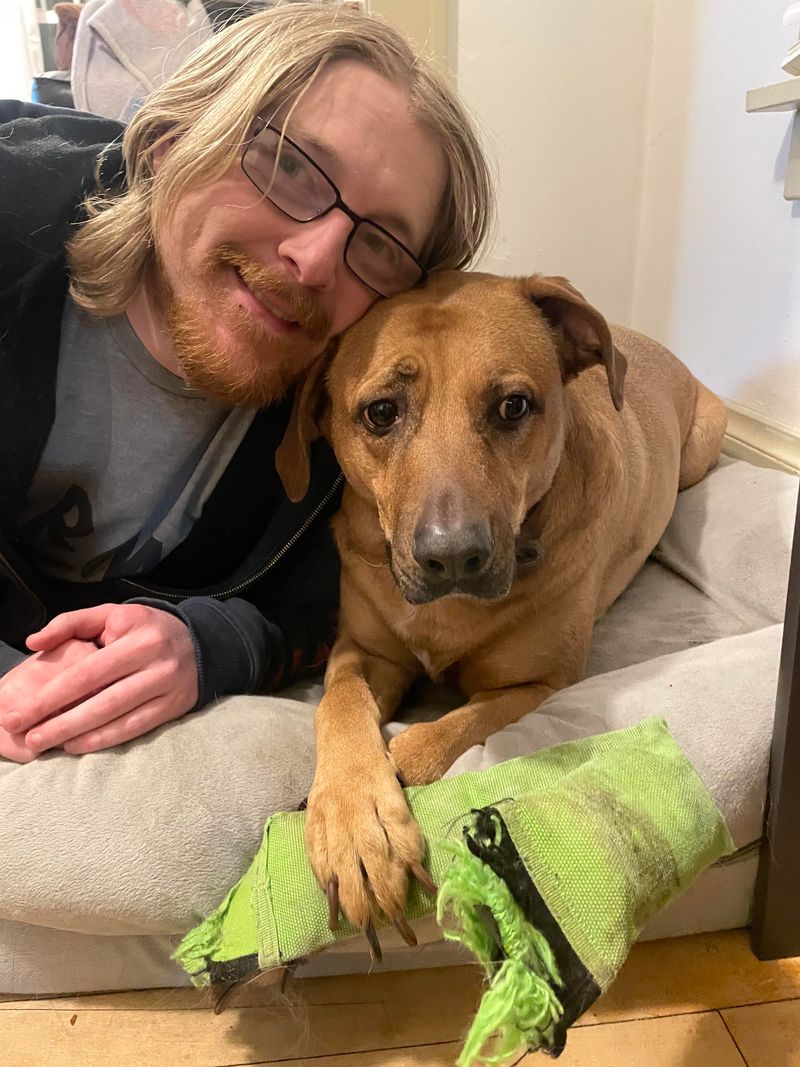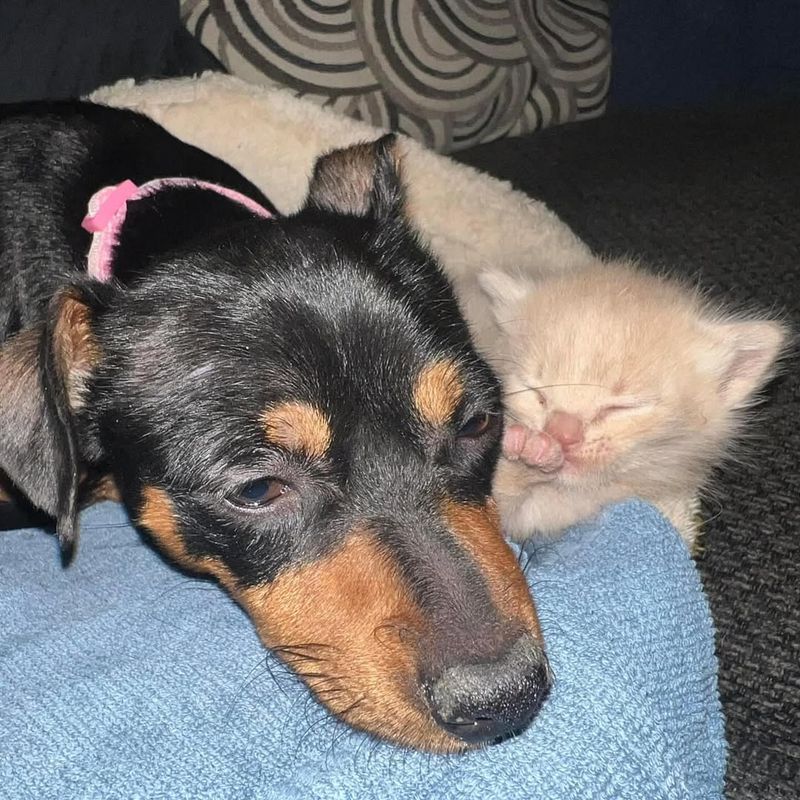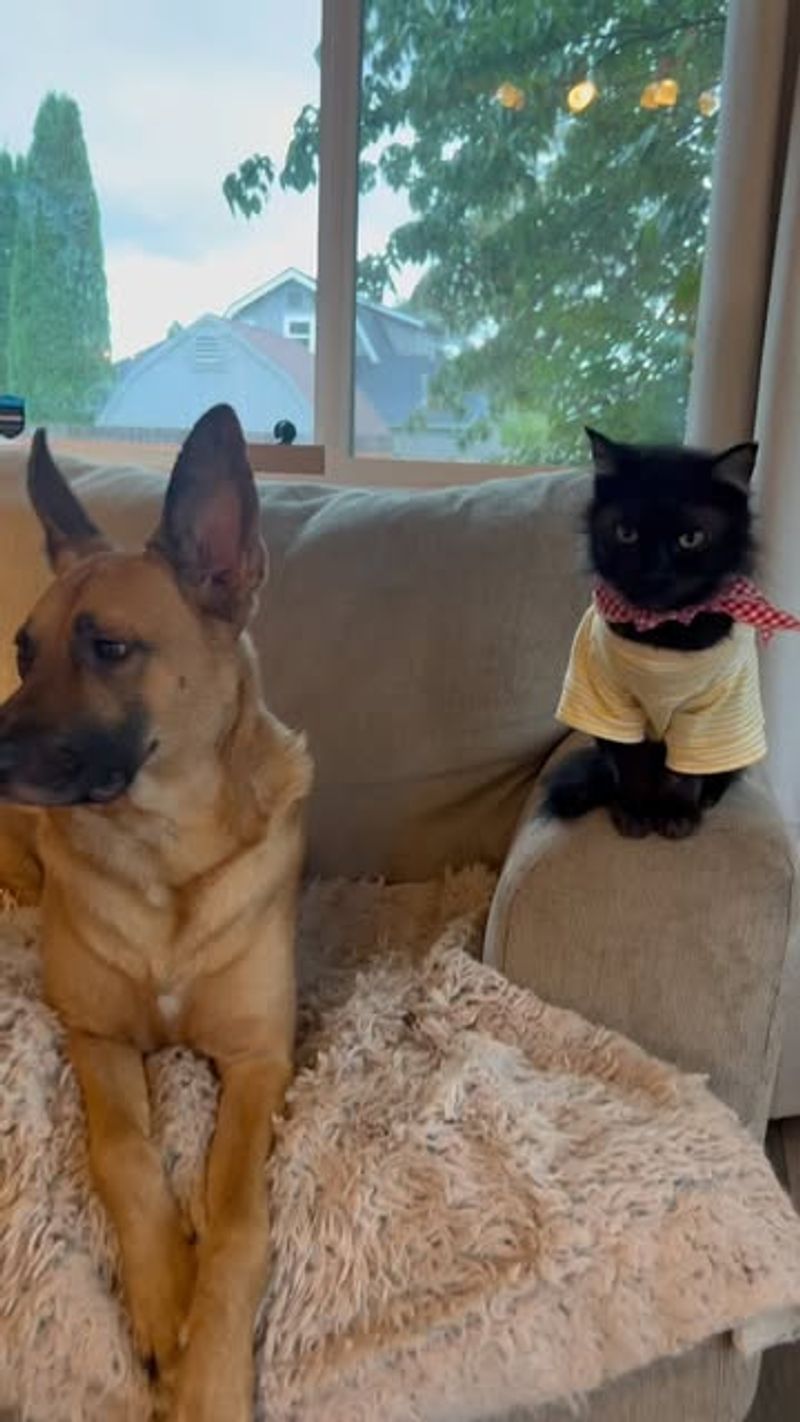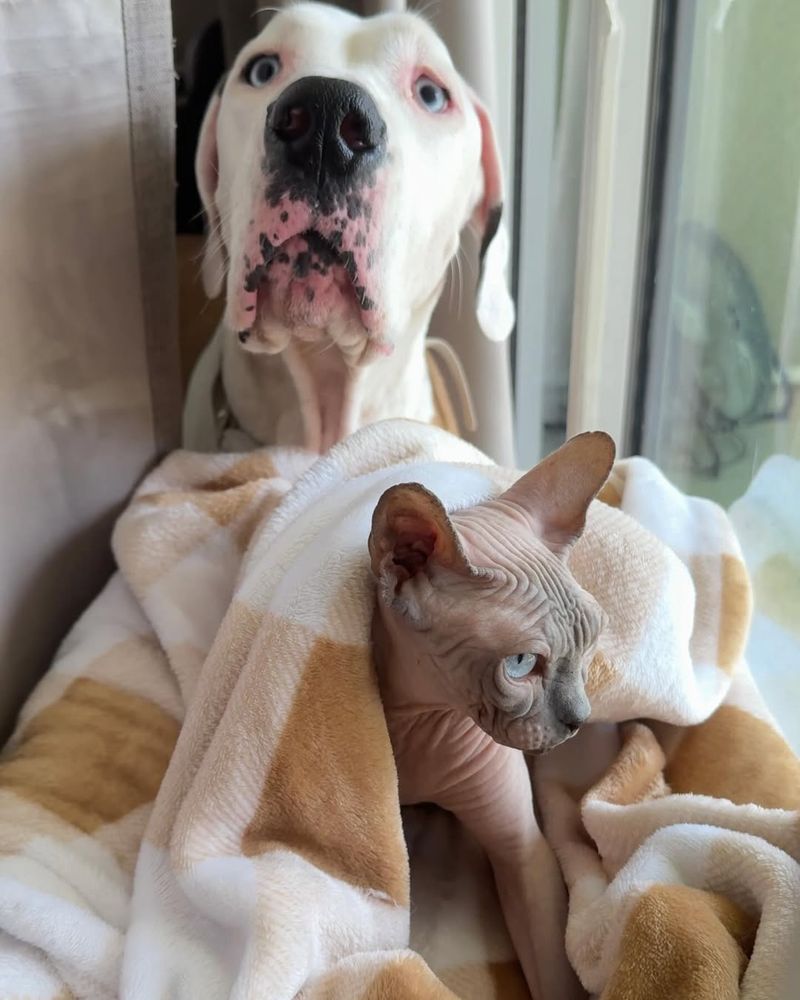Alaskan Malamute
Their large size and strength mean that even harmless play can be intimidating for a cat. While they are affectionate with humans, they need supervision around cats. Training and socialization are vital to manage their interaction with other pets, keeping harmony within the home.
Siberian Husky
Huskies are curious and playful, often seeing smaller animals as fun chase targets. Their boundless energy requires a lot of exercise, which can make them restless and more likely to pursue a cat out of boredom. With proper training and gradual introductions, it is possible for Huskies and cats to coexist, but it requires dedication.
Jack Russell Terrier
Despite their small size, they are fearless and often relentless in their play, which can overwhelm a cat. Proper training and supervision are essential to ensure they don’t stress out feline companions. These terriers thrive in active households where they can channel their energy positively.
German Shepherd
Their size and strength, along with a natural drive to protect their territory, can lead to conflict if not properly managed. With training, they can learn to respect a cat’s space, yet it requires patience and consistency. German Shepherds need a structured environment where they can exercise their skills without clashing with their feline housemates.
Shiba Inu
Their aloof nature might seem like a match for cats, but their strong-willed personality often leads to clashes. Shibas are known for their hunting instincts, making them prone to chase. Socialization is crucial to help them cohabit with cats peacefully. Owners must be prepared for a journey of patience and mutual respect to foster a harmonious relationship between these two pets.
Beagle
Beagles can be persistent, and their determined attitude means they might not take no for an answer. Their friendly demeanor can sometimes be too much for a reserved feline. Proper training and boundaries are essential for a peaceful cohabitation, ensuring each pet has its own space and respect for one another.
Border Collie
Collies need lots of mental and physical stimulation, which helps curb their herding instincts around household pets. Early socialization and training are key to teaching them to respect a cat’s boundaries. With the right environment, Border Collies can learn to coexist with feline friends, balancing their instincts with patience.
Dalmatian
Their strong personalities and need for companionship might clash with a cat’s more solitary nature. Dalmatians thrive with consistent training and socialization to prevent them from being too overbearing. While they are affectionate and loyal, they require guidance to navigate interactions with smaller animals like cats, ensuring peace and understanding between the two.
Australian Cattle Dog
Their high energy levels and determination mean they require a lot of exercise and mental challenges to stay balanced. When bored, they might turn their attention to chasing or herding a cat. This breed needs an owner committed to providing structure and training, helping them live harmoniously with feline companions.
Chow Chow
Chow Chows are very territorial and may not appreciate a cat’s presence in their space. Their strong will and sense of ownership require careful socialization and training. While they are devoted to their human families, they need guidance to accept other pets. Patience and respect are key when introducing a Chow Chow to a cat, creating a balanced environment for both.
Airedale Terrier
Their playful and energetic nature can be overwhelming for a cat that prefers peace and quiet. Training and socialization are crucial to manage their interactions with feline housemates. With patience and consistent guidance, Airedale Terriers can learn to restrain their instincts and live in harmony with cats, balancing their exuberance with respect for their feline friends.
Weimaraner
These dogs are intelligent and require constant mental stimulation, which can lead to chasing or unwanted interactions with cats if not properly managed. Weimaraners thrive in active households where their energy is directed positively. Early socialization and structured environments help them coexist peacefully with feline companions, ensuring each pet respects the other’s space and needs. A firm but gentle approach to training is key.
Afghan Hound
This breed’s independent nature and tendency to chase can create tension with cats. They require ample exercise and mental stimulation to satisfy their instincts. Training and socialization are essential to prevent them from seeing cats as prey. With the right guidance and patience, Afghan Hounds can learn to live peacefully with feline housemates, balancing their instincts with respect for their companions.
Basenji
Their independent spirit and curiosity might lead to playful pursuits that don’t amuse a cat. Basenjis thrive in environments where they can explore and satisfy their instinctual needs. Early socialization is crucial to teach them to coexist with cats, fostering an understanding and respect for their feline counterparts. Their playful yet aloof nature requires guidance to ensure harmony.
Cairn Terrier
Despite their cheerful demeanor, Cairn Terriers can be persistent and curious, leading to unwanted interactions with cats. Training and boundaries are necessary to ensure peaceful cohabitation. These terriers need an environment where they can channel their energy constructively, promoting a positive relationship with their feline housemates.
Scottish Terrier
Their territorial instincts might clash with a cat’s disposition, requiring careful management. Scotties thrive with consistent training and clear boundaries to ensure they respect other pets. Despite their stubbornness, they are loyal and affectionate with family members. Early socialization helps them adapt, creating a balanced environment where both dogs and cats can coexist peacefully, respecting each other’s space.
Fox Terrier
Their energetic nature and curiosity might lead to relentless pursuits that stress feline companions. Early training and socialization are crucial to teach them boundaries. Providing mental and physical stimulation helps them channel their energy positively. Fox Terriers can learn to coexist with cats, but it requires patience and structured environments to ensure peace and understanding between these pets.
Old English Sheepdog
Despite their size and strength, they are playful and require ample exercise to keep them balanced. Training and socialization are important to teach them boundaries with feline companions. With patience and a structured environment, Old English Sheepdogs can learn to live harmoniously with cats, balancing their instinctual behavior with respect for their housemates.
Irish Wolfhound
Their large size can be overwhelming for smaller animals, requiring careful supervision and training. Irish Wolfhounds need a structured environment where they can learn to coexist peacefully with feline companions. Early introductions and consistent guidance help them understand boundaries, fostering a harmonious relationship between these two distinct pets.
Whippet
Despite their energetic pursuits, Whippets are gentle and affectionate with their families. Training and socialization are crucial to teach them boundaries with cats, ensuring peaceful interactions. Providing mental stimulation and appropriate outlets for their energy helps them live harmoniously with feline housemates, balancing their natural instincts with respect.
Dachshund
Their curious and bold demeanor might clash with a cat’s preference for independence. Training and socialization are essential to help them learn boundaries and respect for feline companions. Dachshunds thrive in environments where they can satisfy their hunting instincts positively, ensuring peaceful coexistence with cats. With patience and guidance, they can balance their spirited nature with harmonious interactions.
Rhodesian Ridgeback
Despite their strength, they are gentle and loyal with their families. Training and early socialization are crucial to manage their interactions with cats, teaching them to respect boundaries. Ridgebacks need a structured environment where they can exercise and channel their instincts positively. With patience, they can learn to coexist peacefully with feline companions, balancing their natural instincts with harmony.
Miniature Pinscher
Despite their size, they have a big personality and strong territorial instincts. Training and socialization are essential to teach them boundaries, ensuring they respect feline companions. Min Pins thrive in environments where their energy is directed positively, promoting peaceful coexistence with cats. With patience and guidance, they can balance their spirited nature with harmonious relationships.
Belgian Malinois
Their tendency to herd and control can create challenges in interactions with feline companions. Training and socialization are crucial to teach them boundaries and respect. With the right environment and guidance, Belgian Malinois can learn to coexist peacefully with cats, balancing their natural instincts with harmonious living arrangements.
Great Dane
Their playful yet clumsy nature might lead to accidental intimidation or unwanted interactions. Training and socialization are essential to teach them boundaries, ensuring they respect feline companions. Great Danes thrive in environments where they can interact gently and respectfully with cats, balancing their natural playfulness with harmonious living arrangements. With patience and guidance, they can learn to coexist peacefully with their feline housemates.
